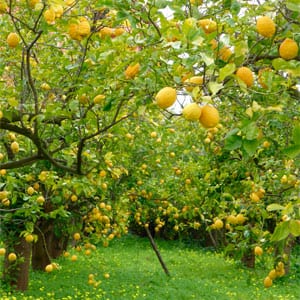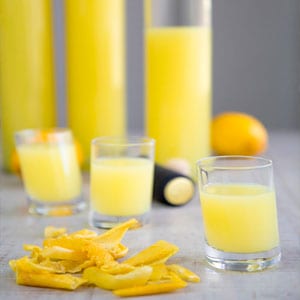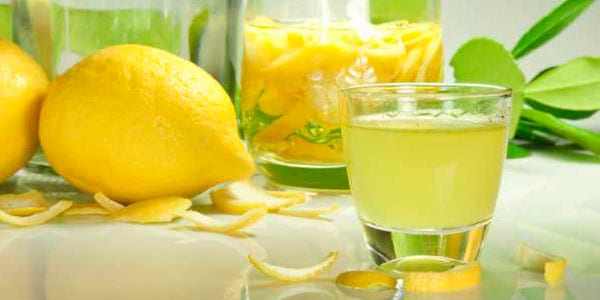El Limoncello, probably the best known Italian drink outside the borders of Italy, it is native to the southern areas and specifically to the Campania region, the Gulf of Naples and its Sorrentine coast. The towns of Sorrento, Amalfi, Massa Lubrense, Vico Equense and Capri are the producing areas of this liquor, where it is grown in the form of terraces facing the coast in a mild climate typical of the Mediterranean.
Although this area in principle is not an ideal place for growing lemons, doing it on terraces sheltered from the coldest airs, clay soils and the care of the farmers in the area make almost continuous harvests possible, since they are They get four a year of this somewhat more oval and thick-skinned variety of lemons that facilitates the preparation of this excellent drink.
These lemons that have achieved the PGI (Protected Geographical Indication) in 2000 are sweeter than most varieties and can also be eaten for their sweetness. The spontaneous presence of lemons in the Sorrentine Peninsula dates from the XNUMXth century, while the first crops would have been the work of the Jesuit fathers in the XNUMXth century.

The Campania area offers, in addition to limoncello, a multitude of attractions
The limoncello area is extremely beautiful at all times of the year. You can see almost all the crops of the Mediterranean such as the vine, the orange trees and the orchard.
A must visit is Sorrento, a walled city where we find the Sedile Dominova. It is an old XNUMXth century loggia of the Sorrento nobles and the Museo Correale. Also the cathedral and the Basilica of San Antonio are of a singular beauty. Here the lemon perfume is omnipresent, which also appears drawn on all kinds of ceramics.
The boom in consumption of this magnificent liquor has led to its production by 400 producers. Artisan factories thrive, some of which admit visits so that we can learn about the cultivation process and its preparation.
We can find them in Catatur Italy, such as the Carlo Mansi Liquorifice, in the town of Minori. It is the first on the Amalfi Coast to start making limoncello in a factory in 1990. Until then, it was only made at home. Carlo Mansi performs the entire limoncello production process manually.
This is how he tells us
“Even peeling lemons, which hardly anyone does by hand. We also filter it by hand. It is done the same as at home ”, Mansi tells Grandes Productos. But, in addition, Mansi does something unique: “We use lemons when they are still green. They cost twice as much but they are much more perfumed ”.
Mansi continued the limoncello tradition that his father had started in 1934. In 1991 he created lemon cream and currently has a dozen products, including Cicarenella, the second best-seller behind limoncello. It is made from anise and orange, along with so many other natural aromas that respond to the secret recipe of a woman, Carmela D'Amato, who gives you the ingredients for its preparation.

Preparation mode
Limoncello is made by macerating the lemon skin in food alcohol. But only the outer and yellow part, avoiding marinating the white part. This process will last about two weeks without being exposed to light. Thus, lemon juice is not incorporated but only the lemon peel.
Once the maceration is completed, a syrup is made with water and sugar that will be mixed with the previously macerated alcohol. The resulting liquid will be limoncello. The recipes will vary depending on the days, the concentration of the mash and the amount of sugar. These, then, are the secrets of each of the limoncello brands and factories.
The conservation must be at less than twenty degrees Celsius and can be served as the end of a meal. It is usually offered free of charge in some restaurants in the area at the end of meals, although drunk in moderation (since it is 30ºC) it can be taken at other times and accompanying desserts and appetizers.







